Will the Trump administration’s chaotic approach to government reform have consequences? As I outlined in a Brookings report, the mass firings of civil servants—followed by legal and administrative reversals—have lowered morale and prompted some employees to take deferred resignations and leave voluntarily. In some cases, the disruption may be mitigated as political appointees assume leadership roles. But what about areas where the managerial damage caused by the initial phase of DOGE is not addressed?
One such agency could be FEMA—the Federal Emergency Management Agency. For most of American history, disaster response was solely a state and local responsibility. That changed in 1974, when Congress passed the Stafford Act, which outlined how the president should coordinate with states in the event of a disaster. As I once described in an article for the Harvard Law and Policy Review, “FEMA itself was not created until 1979, when President Carter, noting that more than 100 federal agencies were involved in aspects of disaster response, created the department by executive order. However, it was not until 1988 that Congress amended the Stafford Act, formalizing the process for handling disasters in the United States. Ever since, the criteria for issuance of a disaster declaration have remained fairly constant. The Act assumes that states and localities are first responders and that they can effectively assess the damage resulting from an event and, if necessary, ask the President for federal assistance.”
Since its creation, FEMA has had both good and bad years. Many Americans remember the federal government’s widely criticized response to Hurricane Katrina, captured on T-shirts seen around New Orleans that read, “FEMA— Federal Employees Missing in Action.” But Katrina wasn’t the first instance of flawed disaster relief. In 1992, FEMA faced significant criticism for its slow and inadequate response to Hurricane Andrew in Florida, prompting calls to abolish the agency. Just two years later, however, a reformed FEMA under new management received praise from many quarters for its quick response to the Northridge earthquake in California.
As hurricane season begins, questions remain about what to expect from FEMA. Two days after his inauguration, President Trump appointed Cameron Hamilton, a former Navy SEAL with no prior disaster management experience, as interim director. Critics quickly drew comparisons to President George W. Bush’s FEMA director, who also lacked virtually any disaster management experience and oversaw the troubled federal response to Katrina. Two days after Hamilton’s appointment, Trump floated the idea of eliminating FEMA altogether. Prominent Republicans opposed the move. Senator Ted Cruz (R-Texas) told CNN, “FEMA plays a critically important role in disaster recovery,” with similar comments from Sens. Bill Cassidy (R-La.) and Thom Tillis (R-N.C.) in the same report. Nonetheless, on March 23, Homeland Security Secretary Kristi Noem reiterated Trump’s pledge to eliminate the agency.
In the meantime, longtime FEMA leaders were fired, and as the situation unfolded, many others opted for the deferred resignation program, leaving the agency understaffed and lacking experienced leadership as hurricane season approached. During this period, interim Director Hamilton reversed his position on FEMA and told Congress the agency was vital to communities “in their greatest times of need,” adding, “I do not believe it is in the best interest of the American people to eliminate the Federal Emergency Management Agency.” He was soon replaced after publicly contradicting what appeared to be the White House’s stance on FEMA. His successor, David Richardson, also had no prior disaster management experience. In his first two weeks, Richardson scrapped the agency’s strategic plan, which outlines FEMA’s operations during emergencies. Weeks later, however, he announced the agency would revert to using the previous 2024 plan.
The resignations of many of FEMA’s senior leaders has left the agency without experienced leadership at the top. According to a FEMA official familiar with internal figures, “roughly 10% of FEMA’s staff have left since January, and the agency is projected to lose close to 30% of its workforce by the end of the year.”
The ongoing uncertainty at FEMA—driven in part by DOGE’s interference and the Trump administration’s ambivalence about the agency’s future—raises concerns that the next major natural disaster could be a repeat of Hurricane Katrina. Trump has said the phaseout of FEMA will begin after hurricane season, but that timeline remains in question for one fundamental reason: In serious disasters, local first responders are often among the victims. The idea that states can manage large-scale emergencies on their own simply doesn’t comport with on-the-ground realities. For instance, during Florida’s Hurricane Andrew in 1992:
Florida was slow to realize its own dire straits because many of its emergency workers were among the storm’s victims. Half of the members of the Dade County Police and Fire Departments had lost their homes. Most of the area’s fire and police stations were destroyed. Like their fellow southern Floridians, disaster management officials were looking for food, water, shelter, and medical care. The state was unable to issue specific requests for aid because it had no one available to assess the damage.
The situation was no different 13 years later, when Hurricane Katrina struck New Orleans.
Katrina completely decimated local government’s ability to communicate even the extent of the damage. The Mayor of New Orleans had to operate out of the Hyatt Hotel for several days, unable to establish communications with anyone; many state and local public safety agencies suffered water and wind damage to their equipment; the breakdown of communications led to an inability to coordinate state and local responses. Evacuation buses were under water, and the bus drivers could not get to them in any event.
These challenges will persist beyond this year’s hurricane season. Whether the crisis is a hurricane, a once-in-a-century storm, a major flood, or a radiological attack in a densely populated area, local first responders are likely to be among the victims. In such cases, it is the federal government’s responsibility to coordinate support from neighboring states and deliver aid to affected communities. The Trump administration’s consideration of abolishing FEMA may need to be quietly set aside or replaced with a reform plan. In the meantime, the hope is that disaster response efforts are effective and do not become disasters themselves. President Trump may share that hope—as President George W. Bush learned, presiding over a disastrous response to a disaster saps political capital and hampers the rest of the presidential agenda.
The Brookings Institution is committed to quality, independence, and impact.
We are supported by a diverse array of funders. In line with our values and policies, each Brookings publication represents the sole views of its author(s).
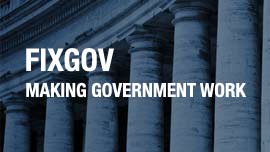
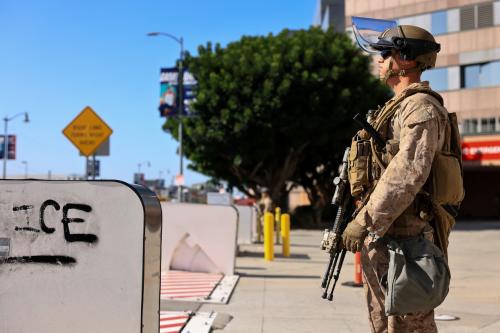
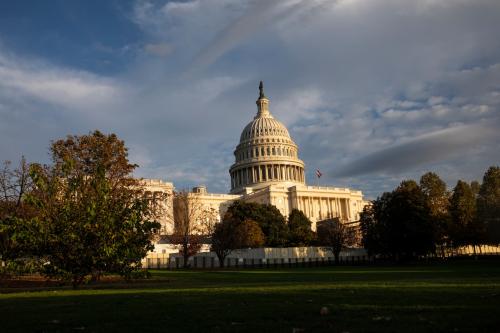
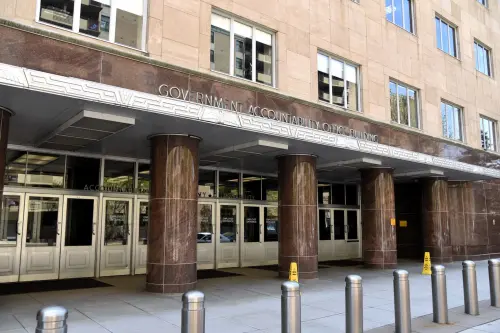

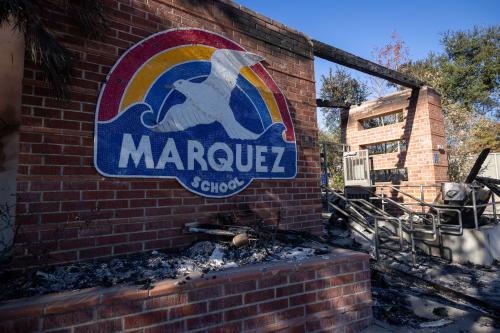
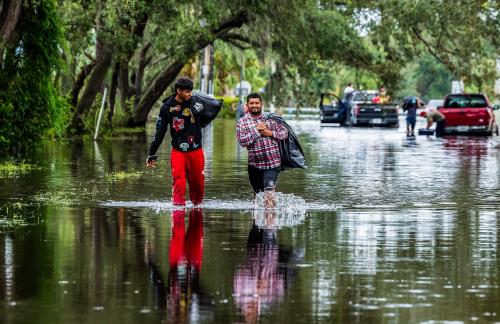
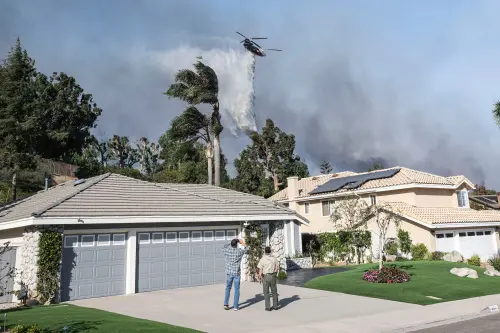
Commentary
Will the federal government be ready for natural disasters this year?
July 2, 2025